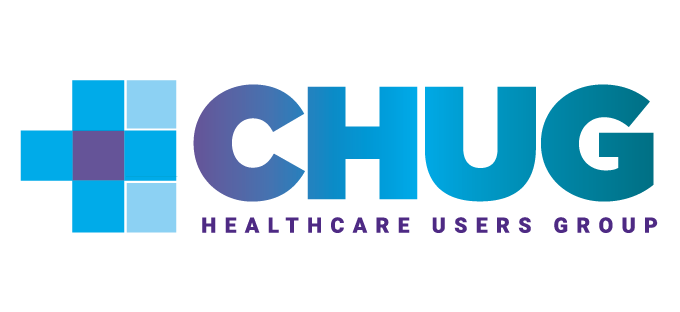Physician Burnout and Professional Dissatisfaction Linked to Electronic Health Records and Computerized Physician Order Entry
Comments by lead author Tait Shanafelt, MD (Mayo Clinic) and Cheryl Zapata (Texas Back Institute)
Use of electronic health records (EHRs) and computerized physician order entry (CPOE) may lead to lower physician satisfaction and higher rates of professional burnout, according to large nationwide study published in the July issue ofMayo Clinic Proceedings.
“Electronic health records hold great promise for enhancing coordination of care and improving quality of care,” said lead author Tait Shanafelt, MD, Director of the Mayo Clinic Department of Medicine Program on Physician Well-being. “In their current form and implementation, however, they have had a number of unintended negative consequences, including reducing efficiency, increasing clerical burden, and increasing the risk of burnout for physicians.”
“I absolutely agree with the findings of the report,” commented Cheryl Zapata, Chief Development Officer at the Texas Back Institute in Plano, Texas. “These findings are consistent with the struggles physicians are dealing with all across the United States. EHRs have not proven an effective tool for improving physician work/life balance.”
Data Derived From a Nationwide Survey
In collaboration with investigators from the American Medical Association (AMA), researchers from Mayo Clinic surveyed a national sample of U.S. physicians using the AMA Physician Masterfile between August and October 2014. The survey included validated metrics to assess burnout, as well as items developed specifically for the study to evaluate the electronic practice environment of the participating physicians.
The study included data from 6,560 physicians in active clinical practice surveyed between August and October 2014. Responses from 6,375 physicians showed a high uptake of EHRs in practice (84.5%). In addition, of the 5,892 who responded that CPOE was relevant to their specialty, 82.5% reported using this technology.
The majority of respondents who used EHRs were very dissatisfied (16.5%), dissatisfied (27.2%), or neither satisfied nor dissatisfied with this tool (20.3%). Similar rates of dissatisfaction were found for use of CPOE: 12.6% were very dissatisfied, 28.3% were dissatisfied, and 20% were neither satisfied nor dissatisfied with this technology.
The study found that physician satisfaction with clerical burden, EHRs and CPOE varied dramatically by specialty. Family medicine physicians, urologists, otolaryngologists, and neurologists had the lowest satisfaction with clerical burden, while pathologists and radiologists had the highest satisfaction.
Use of EHRs and CPOE were associated with lower satisfaction with clerical burden (odds ratio [OR]=0.67 and 0.72; P<0.001) in multivariate analysis that adjusted for age, sex, specialty, practice setting, and hours worked per week. In addition, CPOE was associated with a greater risk of burnout in multivariate analysis (OR=1.29; P<0.001).
Further research is needed to determine if the observed associations are causal, the study investigators noted.
Negative Fallout From EHRs
“Although EHRs, electronic prescribing, and CPOE have been touted as ways to improve quality of care, these tools also create clerical burden, cognitive burden, frequent interruptions, and distraction—all of which can contribute to physician burnout,” Dr. Shanafelt said. “Burnout has been shown to erode quality of care, increase risk of medical errors, and lead physicians to reduce clinical work hours, suggesting that the net effect of these electronic tools on quality of care for the U.S. health care system is less clear.”
“Physicians are not working at their highest level when they are working on data entry,” Ms. Zapata said. “The process of documenting is tedious and extends the time the physician has to work with each patient record. This takes away from time with patients and has physicians working longer hours, despite decreasing Medicare reimbursement rates.”
“In addition, when documenting, physicians often cannot give patients the visual cues that help patients feel comfortable such as making eye contact,” Ms. Zapata said. “Furthermore, there is a significant cost associated with building out and maintaining an EHR.”
“Generally, physicians at Texas Back Institute feel both burdened with the use of EHR and satisfied that we are utilizing it,” Ms. Zapata said. “EHR has increased data entry load for our physicians, which ultimately means they work longer hours to document their patient visits. On the other hand, the physicians also experience many of the benefits of EHR, including greater access to data for research, increased patient communication, access to business intelligence that we have not had in the past, and immediate access to patient information from just about anywhere.”
Strategies for Reducing the Burden of EHRs
To mitigate these negative effects of the electronic environment on physicians, Dr. Shanafelt recommended finding ways to incorporate these tools in a manner that does not increase clerical burden for physicians or reduce their efficiency.
Ms. Zapata suggested the following strategies to ease the burden of the electronic environment and increase productivity:
- Have qualified clinic support staff enter as much documentation as possible into the EHR.
- Have care coordinators help manage patient communication through the EHR to decrease physician work load and offers better customer service to the patient.
- Utilize tools in EHR systems, such as a patient portal, to help decrease the workload on physicians and support staff.
- Engage the patient in the process. Create as many electronic documents as possible for the patient to fill out and/or sign, but make sure they will integrate with your EHR.
- Have an IT team, or whomever to manage the EHR, work closely with the physicians, so they will understand the barriers to implementation and can find solutions to decrease physician burden.
“I would highly suggest physicians have appropriate person(s) on staff get involved in user groups for their provider,” Ms. Zapata said. “The user groups often have blogs, websites, and social networking that give users the opportunity to discuss struggles, share solutions, talk about their experiences to help create better processes and create a better product. We use GE Centricity, and the user group is CHUG (Centricity Healthcare User Group). It is a very active group and the first place we go when we have a question regarding our EHR.”



